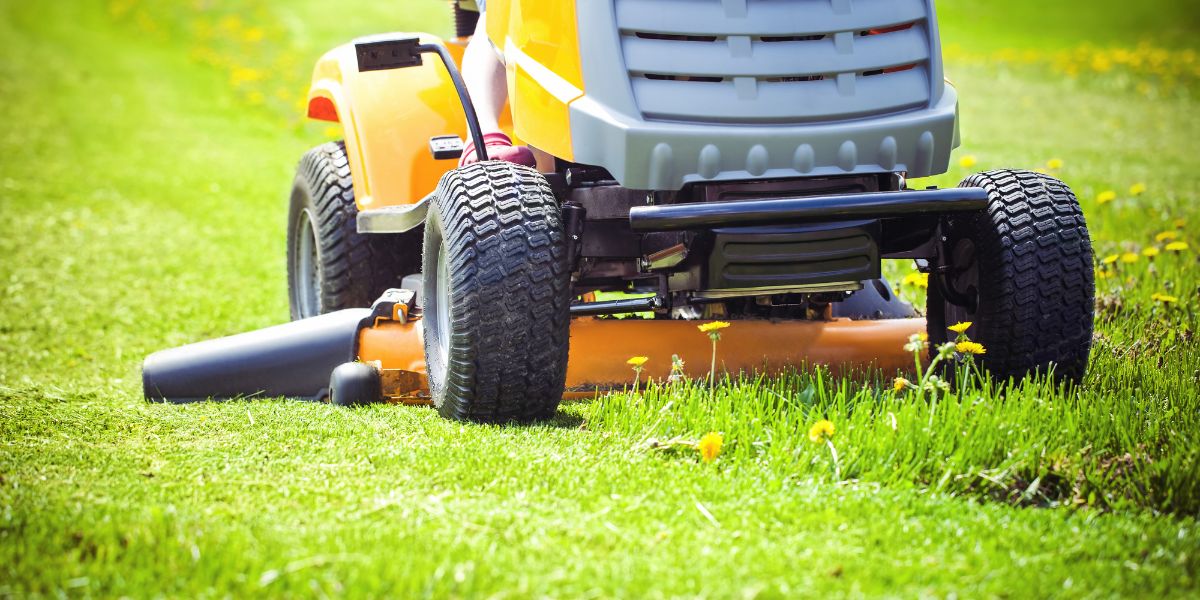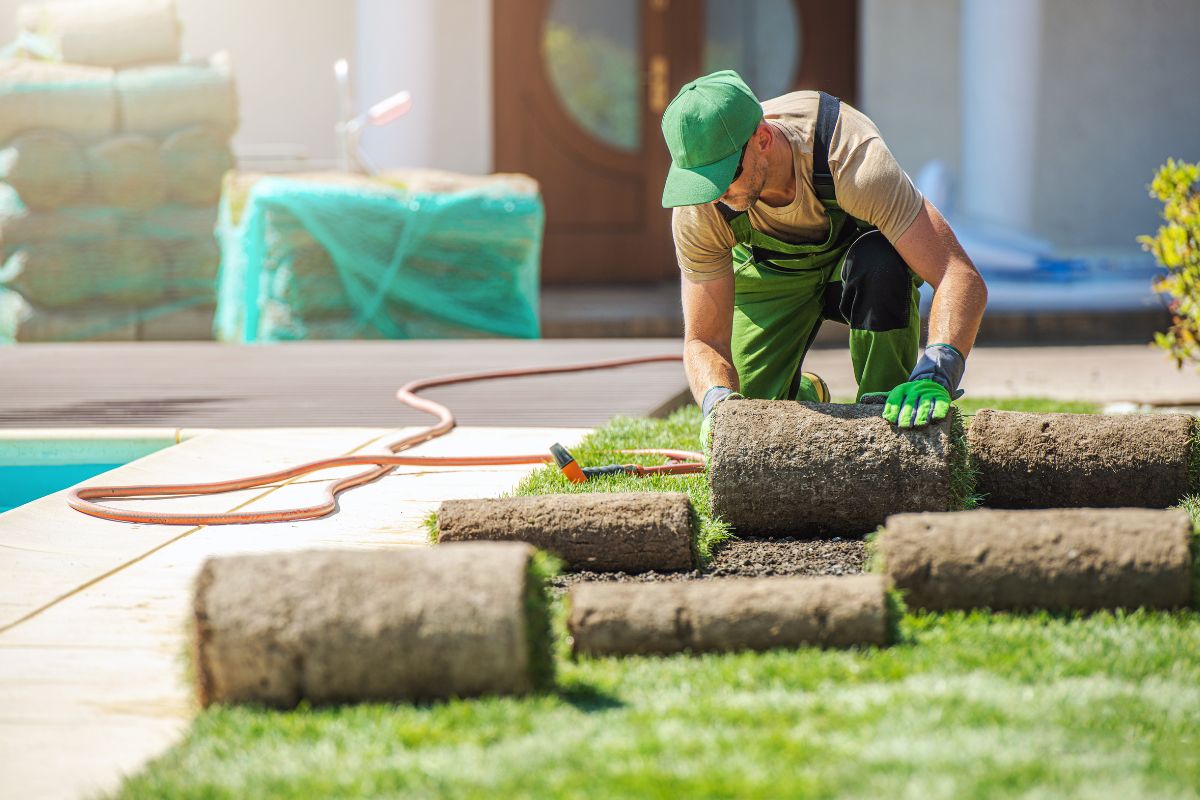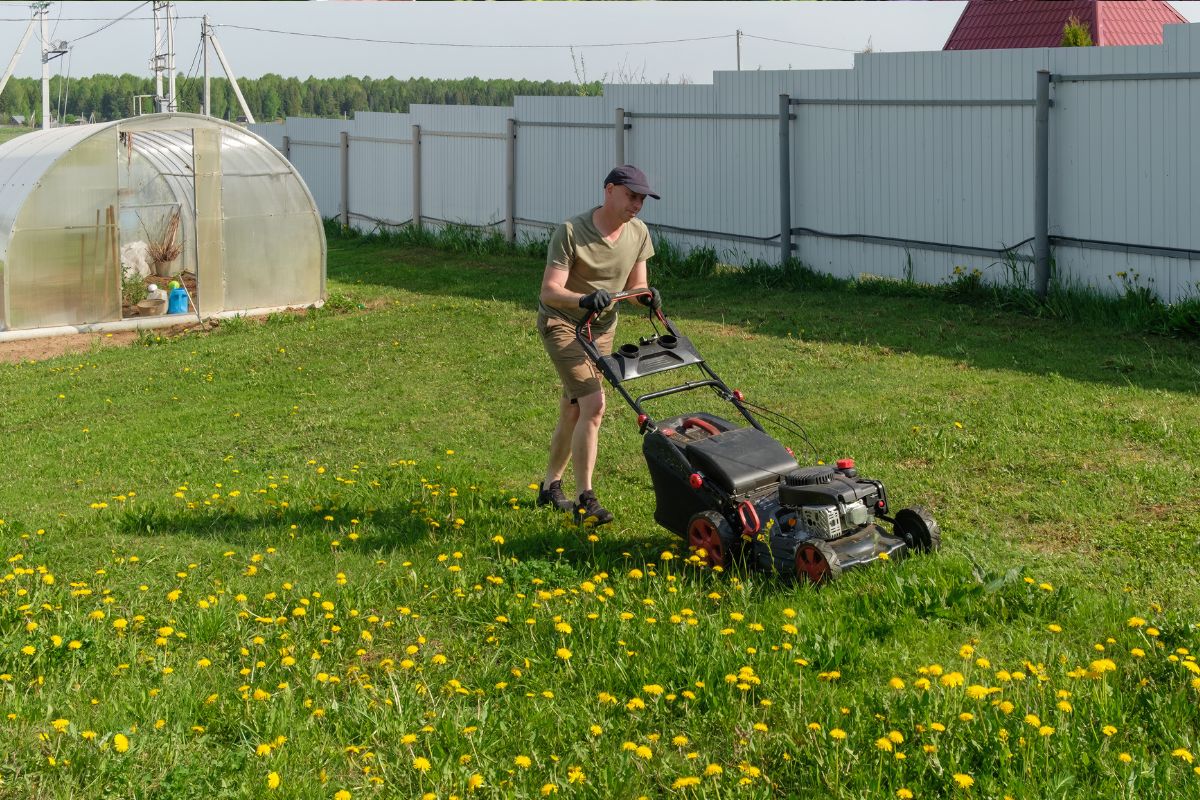Get free quotes within minutes
How to Get Rid of Brown Lawn Patches?

Table Of Content
- Introduction
- Understanding the Causes of Brown Lawn Patches
- How to Fix Brown Lawn Patches: Step-by-Step Solutions
- Preventing Future Brown Patches
- The Role of Soil Testing: The Foundation of Lawn Health
- Conclusion
How to Get Rid of Brown Lawn Patches? Causes, Solutions And Prevention
No matter how lush and green your lawn is, brown patches can still ruin your garden. There are many reasons why these unsightly spots appear on the grass lawn. Whether you have just a single section that has brown patches or if it’s more sprawling, you need to know the reasons behind the brown patches and how to best deal with the situation. In this master guide, you’re going to discover what could be causing brown lawn patches and get some specific things you can do to make it right again.
Understanding the Causes of Brown Lawn Patches
To begin repairing your lawn, you first have to find the cause of why the brown patches are there in the first place. Simply applying a lawn treatment to the area isn’t going to have a lasting solution if you don’t know the cause of the problem. Let’s explore some of the most common causes of brown patches:
A. Lack of Water
One of the primary causes of brown patches is poor watering. To grow healthy grass you need to ensure you have a consistent and appropriate amount of water. If you don’t water your lawn enough, it starts to show stress in brown spots.
Signs of water stress:
- The grass is wilting or curling.
- The soil feels dry to the touch
- When stepped on grass doesn’t bounce back
B. Overwatering
Overwatering can be just as bad as underwatering when it comes to a brown lawn patch. Because the soil isn’t draining correctly, excess water prevents passes of oxygen through the root zone, suffocating grassroots. After a time the roots rot and the grass gets brown.
Signs of overwatering:
- Soil feels soggy or compacted
- Your feet sink into the grass that’s mushy or spongy.
- Water pooling, or puddles formed on the lawn
C. Compacted Soil
Another cause of brown patches is soil compaction. The result is that compacted soil does not allow for water, air or nutrient penetration deep into a grass’ root zone. Compaction can be caused by foot traffic, heavy equipment use and the lack of aeration.
Signs of soil compaction:
- The lawn looks stressed and thin
- Regular watering and fertilising but poor growth
- Water runs off the surface, instead of soaking into the soil.
D. Pest Infestation
Grubs, chinch bugs and armyworms are some types of insects that can do tremendous damage to your lawn by feeding on the grassroots. These pests curl in the grass and whenever they damage it, it turns brown in circular patterns. But if you see too many bugs of any kind or damage to the grassroots, pests could be to blame.
Signs of a pest infestation:
- Bare patches with visible insect activity
- They chew the grass blades or damage it.
- Small holes or tunnels in the soil.
E. Disease
Several fungal diseases cause brown patches in your lawn. The most common of these are brown patch disease, dollar spot, and rust. The fungus loves it warm with humidity and spreads easily if left untreated.
Signs of disease:
- Irregularly shaped brown patches
- White, fuzzy growth on grass blades
- Water-soaked spots become darker over time
F. Pet Damage
Dogs in particular can stain brown spots in your lawn from their urine. Dog urine is quite high in nitrogen and can burn your grass as well as leave brown scorch marks.
Signs of pet damage:
- Brown or yellow patches in a concentrated area
- Patches where pets urinate so often
- Worn down the ground surface
- Discolouration around grass blades
G. Fertilizer Burn
When you put excessive fertilizer into your lawn while using too potent products it can result in fertilizer burn. Browning petals happen as a result of excessive nitrogen concentration present in fertilizers which damages grass roots.
Signs of fertilizer burn:
- Grass blades might turn yellow or brown through the edges
- Grass appears scorched or withered
- Uneven growth patterns due to excess nutrients
H. Environmental Stress
Excessive heat combined with drought conditions and heavy rainfall together stress your lawn. It is tough for grass to survive during unfavourable conditions which can lead to brown patches throughout the lawn over time.
Signs of environmental stress:
- Lack of moisture and scorched and dried grass.
- Irregular growth patterns
- Shrinking or receding grass coverage
How to Fix Brown Lawn Patches: Step-by-Step Solutions
A varying set of steps will be required to restore your lawn based on what is causing the issues. Here’s a breakdown of effective strategies for tackling brown patches:
A. Address Watering Issues
If you suspect a watering problem, follow these steps:
- Test the Soil Moisture: Use a soil moisture meter or try sticking a screwdriver or similar tool into your soil to check for excess or insufficient water. Soil is considered too dry when an insertion tool fails to navigate easily through it. The tools' outcome reflects water conditions so muddy instruments signify excessive moisture levels.
- Adjust Watering Schedule: Lawns thrive on weekly watering amounts between 1 to 1.5 inches that include natural precipitation. Water deeply and infrequently rather than shallowly and often. Deep root growth and drought tolerance in lawns develop thanks to this method.
- Check for Proper Drainage: To identify overwatering issues with your irrigation system you should check for possible leaks or system malfunctions. Examine how water is distributed throughout your entire lawn.
B. Aerate Your Lawn
Soil compaction problems can be solved through aeration because this procedure both releases root pressure and enables better water absorption into the ground.
- Choose the Right Aerator: Lawn aerators that produce small soil plugs are available for rent or sale so users can use them to pull soil plugs from their lawn. Hiring professional gardeners becomes necessary when your lawn exceeds certain sizes.
- Aerate During the Growing Season: The optimal period to practice aerating exists between late spring and early fall when your grass maintains its peak growing phase.
- Apply Fertilizer After Aeration: After aeration finishes you should supply a balanced fertilizer to your grass to help it recover while fostering healthy development.
C. Deal with Pests
If pests are causing the brown patches on lawn, here’s what you can do:
- Identify the Pests: A magnifying glass will help you properly identify which lawn pests have affected your grass so you can find appropriate treatment methods. White C-shaped grubs differ from small black chinch bugs in appearance.
- Apply Pest Control: Based on your pest types a targeted insecticide or organic nematode usage for soil pests would work as the proper treatment method.
- Practice Lawn Maintenance: The combination of mowing and dethatching functions to eliminate pest habitats which prevents upcoming insect outbreaks from occurring on lawns.
If the issue persists, consider hiring a professional pest control service to ensure effective and safe treatment.
D. Treat Lawn Diseases
Fungal diseases can be tricky to treat, but there are steps you can take:
- Identify the Disease: Following up on disease symptoms helps patients pick appropriate treatment solutions. Brown patch disease causes circular patches with specific brown rings that surround these areas.
- Improve Lawn Care Practices: Continue with proper care to reduce overwatering and manage rubbish and properly adjust mowing height to reduce disease spread across your lawn. Healthy lawns at a basic level tend to maintain better disease resistance.
- Apply Fungicide: On fungal infections such as brown patch or dollar spot treat your lawn using manufacturer-approved fungicides according to their guidelines. Additional treatment applications will be necessary after the initial application.
- Improve Air Circulation: Cephalosporins kill microbes that flourish because of moisture, heat and standing water in lawns. To increase airflow thin the dense grass areas while maintaining proper drainage systems.
E. Repair Pet Damage
If your pets are the cause of the brown patches, you can take a few different approaches:
- Water Immediately After Pet Urination: Last-minute watering of urine-soaked areas by pets can help reduce potential damage when you catch them in the act.
- Use Pet-Friendly Lawn Products: Specialized treatments exist for lawns that reduce nitrogen from dog urine.
- Reseed the Damaged Areas: To recover damaged grass areas where your pet has left marks follow watering and fertilization procedures for the grass before reseeding it. By replanting seeds lawn owners can obtain new turf that will eventually bring back the lawn's look.
F. Replant Grass in Bare Areas
Dead grass and thin areas can appear as brown spots on your lawn. In these cases, reseeding or overseeding may be necessary:
- Remove Dead Grass: Clean the damaged location by scraping out all dead grass with a rake or dethatching rake.
- Prepare the Soil: Use light raking to loosen the ground in the bare area. Generally, Newgrass seeds are developed with strong roots when the soil stays moist enough.
- Choose the Right Grass Seed: It's essential to pick a grass seed from a variety of groups that will thrive in your local climate and the grass composition already existing in your lawn. A high-quality seed mixture remains essential for achieving maximum seed germination success.
- Water and Fertilize: Neglecting water only until grass seeds finish their germination process you should establish a fertilization strategy to help your grass grow healthy.
Preventing Future Brown Patches
Once you’ve addressed the current brown patches on lawn, it’s important to adopt practices that will help prevent new ones from forming:
- Maintain Proper Mowing: When trimming your lawn set your mower blade to an appropriate height that matches your grass variety between 2.5 to 3 inches. Cutting your grass too short leads to reduced stress on the lawn which increases the chances of disease development. For best results, consider getting a lawn mowing service to keep your yard in top shape.
- Fertilize Regularly: Use the correct type of fertilizer for your grass so your lawn grows healthily. For optimal outcomes use fertilizers during spring followed by fall.
- Aerate Annually: Regular annual aeration treatments stop soil compaction while simultaneously promoting better lawn health.
- Practice Insect Control: Check your lawn regularly for insect infestations and apply treatment solutions quickly to prevent total damage to your grass.
The Role of Soil Testing: The Foundation of Lawn Health
Your lawn's overall condition depends heavily on the state of your soil. Failure to remedy soil health problems can lead to brown patch damage that becomes difficult to resolve. Soil tests reveal fundamental facts about the substrate which helps users detect hidden problems and resolve possible nutrient discrepancies alongside pH irregularities.
A. Why Soil Testing Matters
Soil testing exposes the fundamental properties of your soil including pH levels and nutritional content along with fertility levels that support healthy grass development. You can’t solve brown spots because soil testing reveals crucial information about how your soil reacts to acids and salts and whether your soil lacks nutrients.
B. What Soil Tests Measure
A soil test typically measures:
- pH Level: The test helps determine whether the soil exists outside a favourable range for maintaining your selected grass variety.
- Nutrient Levels: The test reveals both surpluses and deficiencies of essential nutrients including nitrogen together with phosphorus plus potassium.
- Salt and Contaminants: Hostile salt conditions selectively target grass along with de-icing salt application in regions that regularly experience winter freezing.
C. How to Conduct a Soil Test
You have two options to test your soil through either home DIY kits or sending a sample to an analysis laboratory.
- Collect Samples: Gather your samples by digging 4-6 inch deep holes in severely affected areas and then mix the collected soil.
- Follow Instructions: The instructions that accompany the results will help you understand their meaning.
- Interpret Results: Analyze pH problems and nutrient difficulties then implement proper solutions.
D. Improving Your Soil Based on Test Results
After testing, take these actions:
- Adjust pH: To adjust the acidity, apply lime while sulphur helps reduce alkalinity.
- Add Organic Matter: Composting creates healthy rancher-soil structures combined with biologically active microbes.
- Improve Drainage: This process will require you to modify the soil with sand or gypsum to create superior water-holding abilities.
Conclusion
Appropriate treatment of brown lawn patches demands knowledge of their root causes along with proper solutions for these problems. The correct sequence of steps prevails over the remediation of lawn problems caused by incorrect watering methods, insect outbreaks and soil compression. The combination of practical solutions with preventative measures enables homeowners to create strong and lively lawns that attract admiration within the neighbourhood.
YOU MIGHT ALSO BE INTERESTED IN

How to Install Artificial Grass: A Complete DIY Grass Installation Guide

How to Get Rid of Nut Grass? - Effective Methods for a Clean Lawn











